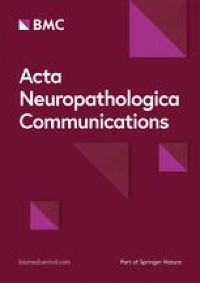|
Medicine by Alexandros G. Sfakianakis,Anapafseos 5 Agios Nikolaos 72100 Crete Greece,00302841026182,00306932607174,alsfakia@gmail.com,
Αρχειοθήκη ιστολογίου
-
►
2023
(272)
- ► Φεβρουαρίου (141)
- ► Ιανουαρίου (131)
-
▼
2022
(2066)
- ► Δεκεμβρίου (80)
- ► Σεπτεμβρίου (170)
-
▼
Μαρτίου
(250)
-
▼
Μαρ 16
(13)
- An enhanced recovery after surgery pathway: LOS re...
- The impact of low serum cholinesterase levels on s...
- ECG Signal Quality Assessments of a Small Bipolar ...
- Synthetic fused sRNA for the simultaneous repressi...
- Increased migratory activity and cartilage regener...
- The Ali Krogius procedure for treatment of patello...
- The time course of different neuromuscular adaptat...
- Enhancement of radiation response of breast cancer...
- Gastric duplication cyst: a challenging EUS differ...
- Real-time eye state recognition using dual convolu...
- The role of DHCR24 in the pathogenesis of AD: re-c...
- Colocalization of Coronary Plaque with Wall Shear ...
- Laser‐Assisted Sialolithotripsy: A Correlation of ...
-
▼
Μαρ 16
(13)
- ► Φεβρουαρίου (190)
- ► Ιανουαρίου (203)
-
►
2021
(7399)
- ► Δεκεμβρίου (186)
- ► Σεπτεμβρίου (472)
- ► Φεβρουαρίου (851)
-
►
2020
(2517)
- ► Δεκεμβρίου (792)
- ► Σεπτεμβρίου (21)
- ► Φεβρουαρίου (28)
-
►
2019
(12076)
- ► Δεκεμβρίου (19)
- ► Σεπτεμβρίου (54)
- ► Φεβρουαρίου (4765)
- ► Ιανουαρίου (5155)
-
►
2018
(3144)
- ► Δεκεμβρίου (3144)
Ετικέτες
Πληροφορίες
Τετάρτη 16 Μαρτίου 2022
An enhanced recovery after surgery pathway: LOS reduction, rapid discharge and minimal complications after anterior cervical spine surgery
The impact of low serum cholinesterase levels on survival in patients with colorectal cancer
|
ECG Signal Quality Assessments of a Small Bipolar Single-Lead Wearable Patch Sensor
|
Synthetic fused sRNA for the simultaneous repression of multiple genes
|
Increased migratory activity and cartilage regeneration by superficial-zone chondrocytes in enzymatically treated cartilage explants
|
The Ali Krogius procedure for treatment of patellofemoral instability should be regarded as obsolete even in skeletally immature patients
|
The time course of different neuromuscular adaptations to short-term downhill running training and their specific relationships with strength gains
|
Enhancement of radiation response of breast cancer cells through the incorporation of Bi2S3 nanorods
|
Gastric duplication cyst: a challenging EUS differential diagnosis between subepithelial gastric lesion and exophytic pancreatic cystic neoplasm—a case report and a literature review
|
Real-time eye state recognition using dual convolutional neural network ensemble
|
The role of DHCR24 in the pathogenesis of AD: re-cognition of the relationship between cholesterol and AD pathogenesis
|
Αναζήτηση αυτού του ιστολογίου
! # Ola via Alexandros G.Sfakianakis on Inoreader
-
Does CBD Oil Lower Blood Pressure? This article was originally published at SundayScaries." Madeline Taylor POSTED ON January 13, 20...
-
Abstract Purpose Clinicians must balance the risks from hypotension with the potential adverse effects of vasopressors. Experts have rec...








